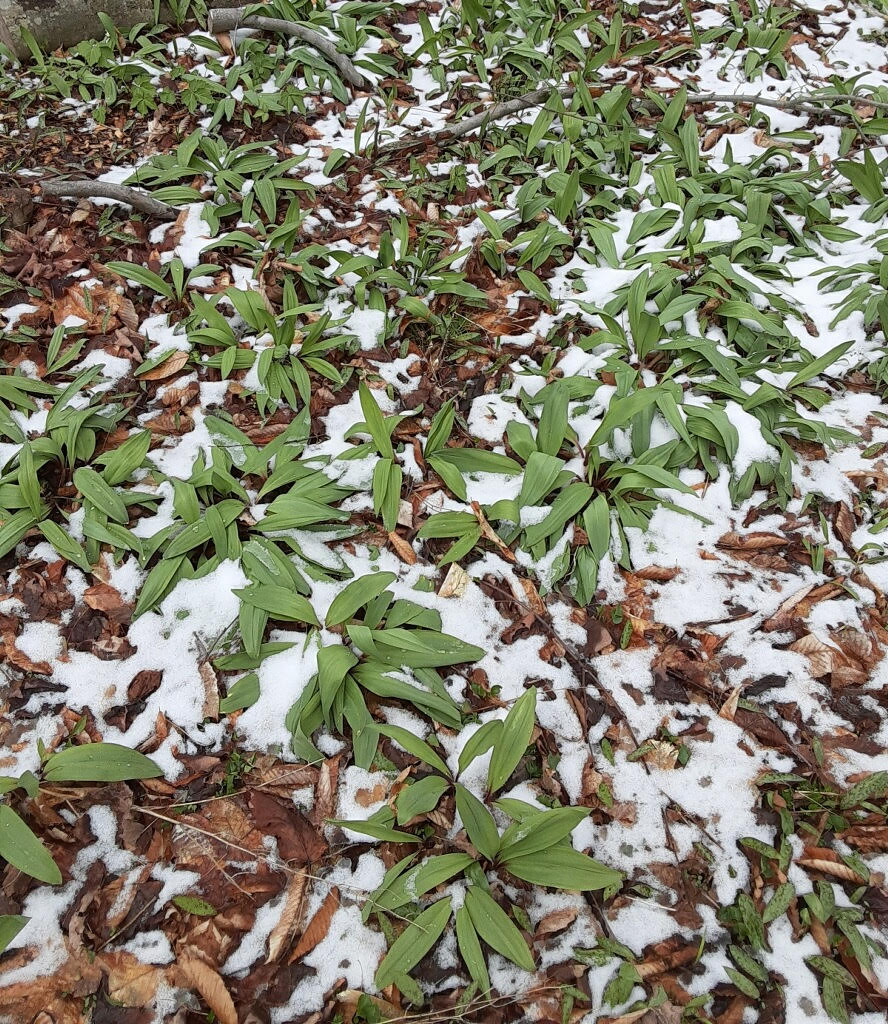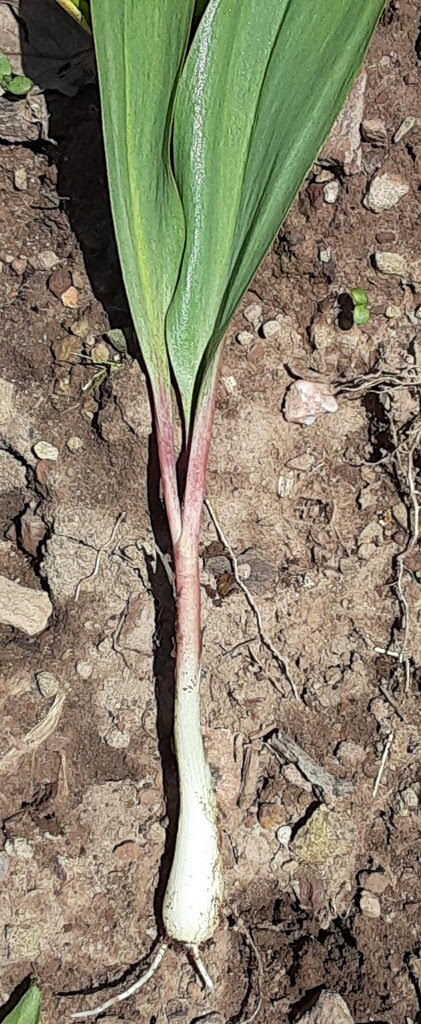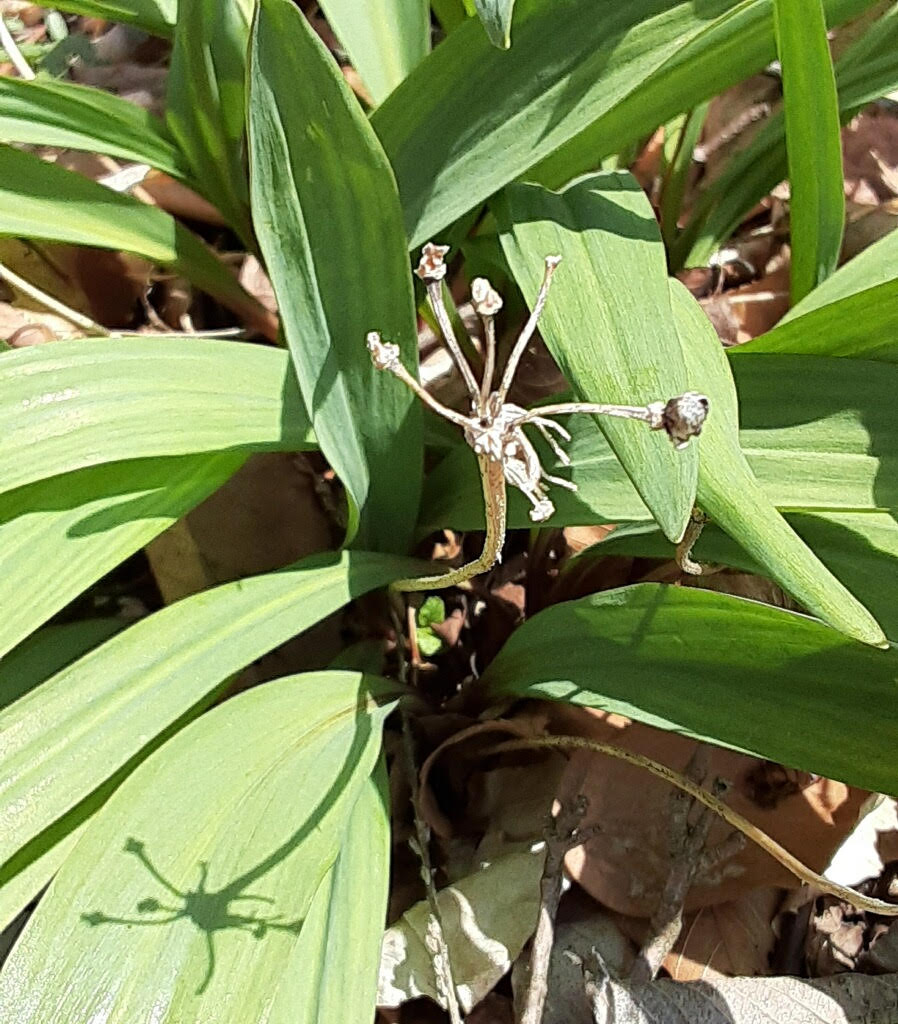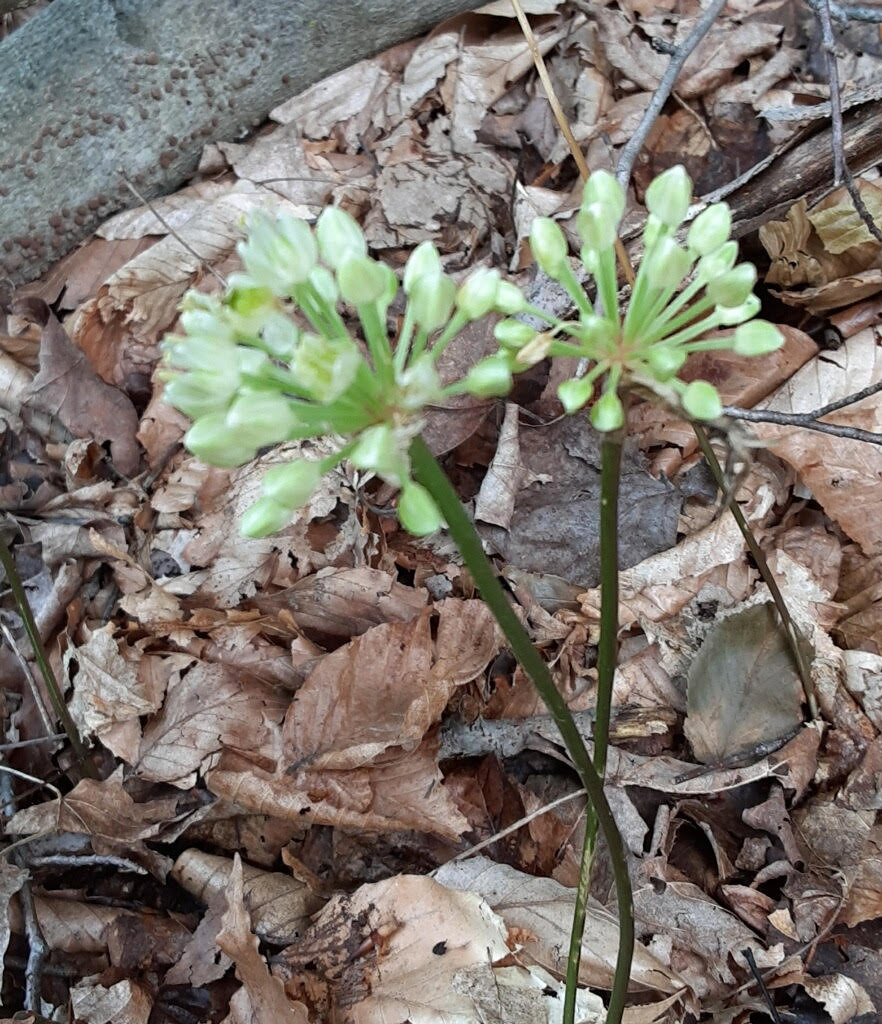By Susan Sprout
Ramping up for spring? It could mean preparing for spring OR going out to dig up this pungent delicacy for a spring feast OR the time for making a required spring tonic from roots! The name – Ramps – is an interesting one that may have made its way here with colonists because it was their name for the wild garlic plants back in England. I’ll bet they were happy to find our native Wild Leeks growing here in the colonies, stretching from Canada to Georgia, for them to use.

I went hunting Ramps last week, hoping to find them back in their regular spots. O boy, did I! By the hundreds! They like the rich woods and moist slopes of Loyalsock State Forest and surrounding areas. These plants are not your local grocery store variety of leeks (Allium porrum) but a wild and, to some, odiferous one (Allium tricoccum).

From a cluster of two to six white bulbs, they put up glossy, eight to ten inch-long, bright green leaves that photosynthesize like crazy in order to store energy. These flat, basal leaves are reddish on their lower stems, an important characteristic for correct identification. Their leaves begin to die back before flowering occurs. Soon after, a single round cluster, about 1 1/2 inches wide, and made up of white flowers, will appear on a smooth, leafless scape or stem. Each flower in the cluster will have six tepals (petals and sepals) and six stamens with creamy-yellow tips and a green ovary in the center. After fertilization, the three-lobed ovary will grow, then dry and split open, allowing small, black seeds to fall. The species name tricoccum comes from Latin for “three-seeded”. For a long time, I couldn’t put a name to this plant because first the leaves were there by themselves, and then the flowers were there by themselves. Finally, I figured it out!

There appears to be a difference of opinion about the family of Wild Leeks. I found them listed in three separate families! Using a reference updated in 2022, ITIS.gov, the winner is Amaryllidaceae, which also contains the Daffodils I wrote about last week. There also seems to be a difference of opinion on the taste and smell of Ramps – skunk smell, mild onion taste, strong garlic odor, pronounced onion flavor. There’s no accounting for taste, right? Anyway, perhaps the mineral content in the various soils where they grow affects their sensory output! At least, people have come together on their opinions about sustainable harvesting techniques for Wild Leeks. Leaving the bulbs in the ground and cutting one or two leaves is best to ensure continuing populations for these perennials. For centuries these plants have been used beneficially for medicine and for food. People who used them were very knowledgeable and taught their children which plants to use and which to let alone. There are plants growing in similar environments as Wild Leeks that are not beneficial…they are poisonous. One in particular has harmed folks I know. It is named False Hellebore (Veratrum viride). Its large, ribbed leaves and rootstock contain extremely toxic alkaloids that cause nausea, vomiting, drops in respiration and blood pressure. Let this one alone.



